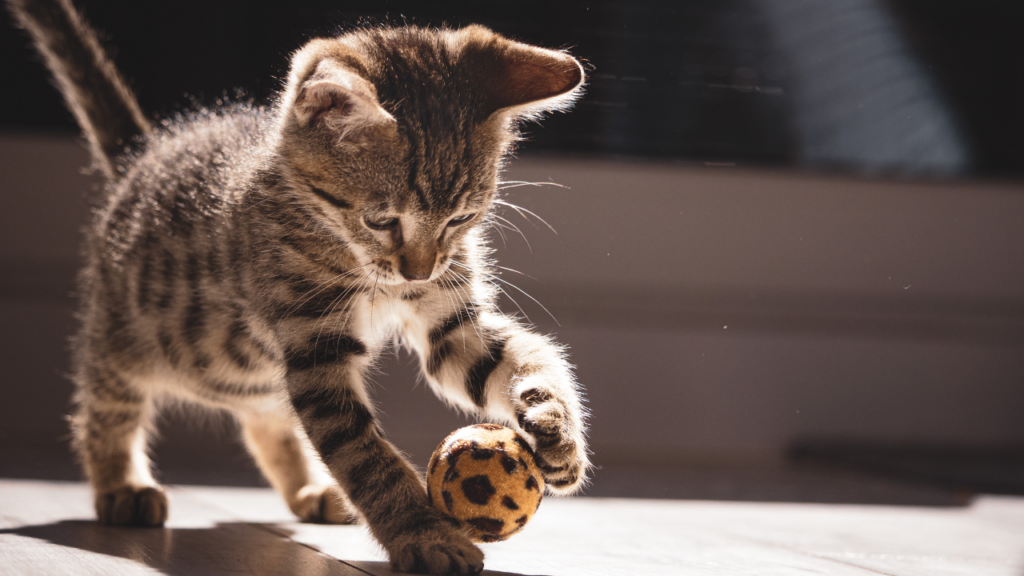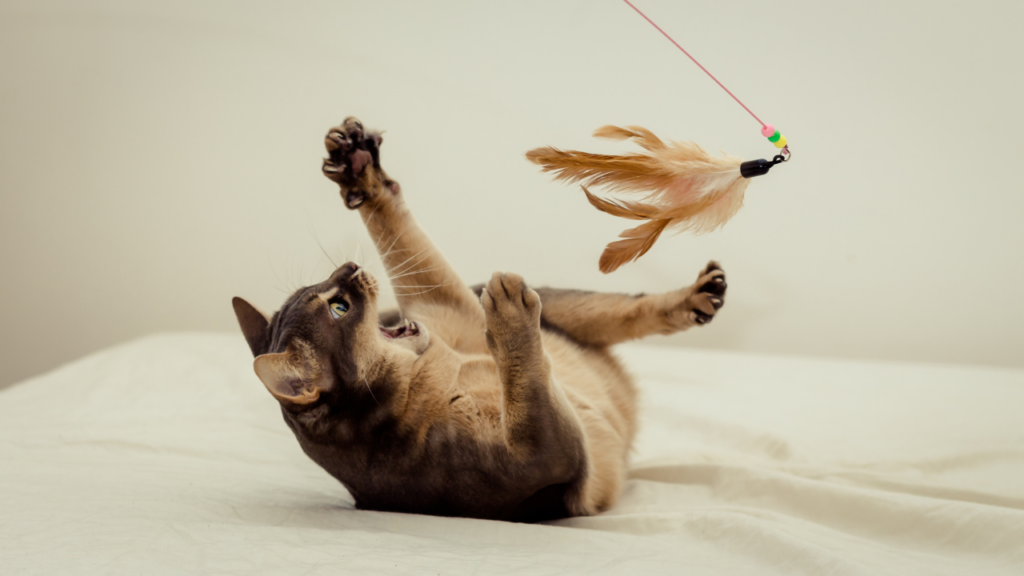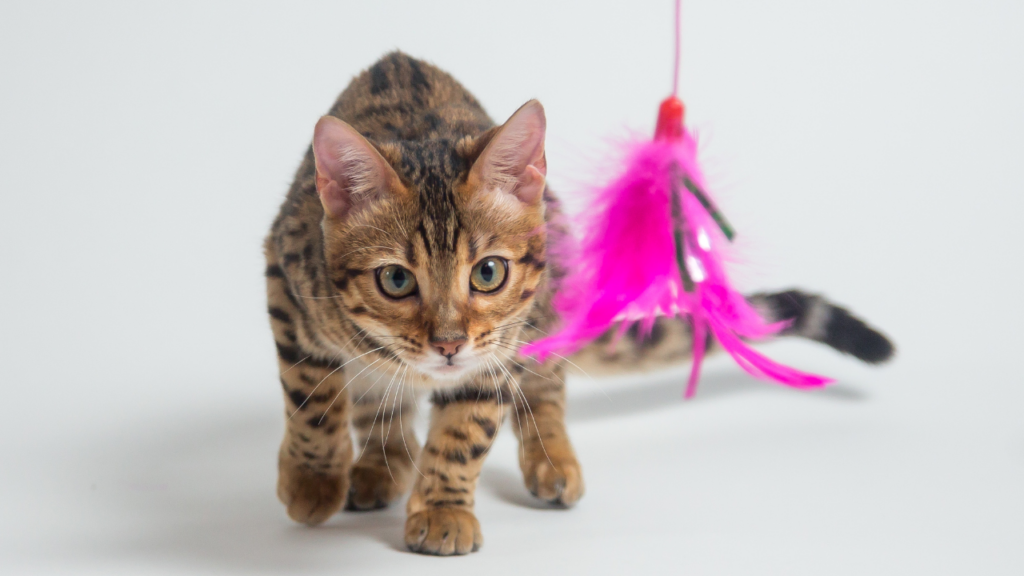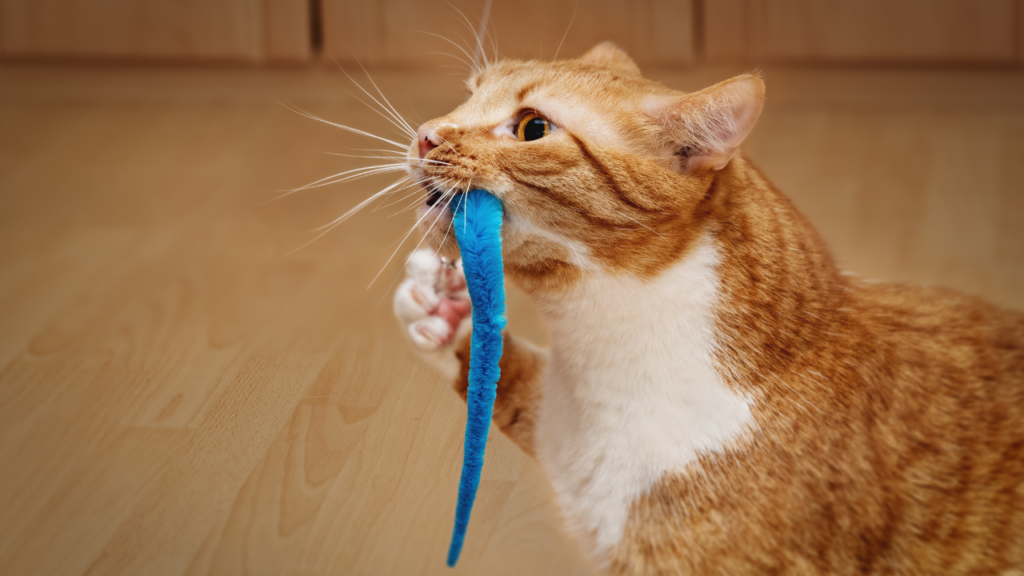
Cats can sometimes receive the short end of the (squeaky) stick, especially when compared to their canine companions. Many dogs receive daily walks, excursions to the park, and a variety of other built-in opportunities to expend energy, be mentally occupied, and be physically active. Do cats exercise? We talk about it less often.
Like dogs and humans, cats can grow obese, stressed, and bored without regular physical activity. You may have heard that individuals should engage in at least 150 minutes of regular or 75 minutes of difficult aerobic activity every week. How about our feline family members? Don’t worry about the solution. Continue reading for information about cat exercise time, ideas, and how to get a lazy cat to exercise.
How much exercise does a cat need?

Overall, most adult cats benefit from at least 30 minutes of regular physical activity. Kittens typically require around an hour each day because they are inherently more lively, have higher energy levels, and require more mental stimulation.
Importantly, these proposals serve as general guides. Some cats thrive with additional exercise. The amount of physical activity your pet requires will vary depending on its breed, age, energy level, and temperament. For example, some adult cats have as much energy as kittens and may become bored or destructive if they are not given an outlet, such as exercise. A ill or injured cat may need to reduce its activity for a while.
Your veterinarian can provide tailored advice, although restricting physical exercise should only be temporary. Cat exercise may fall to the bottom of your priority list as a pet parent, especially if your cat is confined inside. However, life within requires deliberate movement. Even if the weather outside is terrible, you will most likely discover ways to exercise. Cat exercise has numerous benefits, including:
- Weight maintenance and loss (if needed)
- Lowered risk of several chronic diseases, including diabetes and arthritis.Increased strength and mobility as they age.
- Psychological stimulation
- Less damaging behavior.
- Bonding (with human or feline family members)
- Many of these may sound similar to the advantages of exercise—and they are.
What type of exercise may cats do?

Cats, like people, benefit from activities that they love. Fortunately, you have various options, including:
Wand toys. Wand toys are frequently designed to resemble fishing poles. At the end of the pole, there is generally a plush animal and maybe a feather or bell to “tease” a cat. The toys encourage their enjoyment of pouncing, a skill they employ to pounce on prey in the wild, while also providing aerobic activity (your arm may get a workout, and playing with wands allows the two of you to interact).
Cat trees. Cats may climb on these with other cats or on their own, making them a good alternative if you’ll be away from home frequently. They also provide as a haven for stressed-out cats to withdraw to elevated ground. Many feature scratching posts that can save your couch.
Toys with an interactive component. Some interactive toys give treats or require cats to “hunt” for something tasty. Others may use a feather or toy that bursts out and then hides, mimicking how a cat’s prey behaves in the wild.
Lasers. Press the button to see your cat sprint around for the red dot. These toys might be entertaining for cats, but they can also frustrate them. Ending the game by pointing the laser at a food dish, a cat nip toy, or a sweet treat can make laser pointers a complete success.
How to Get a Lazy Cat to Exercise

Some cats require a (figurative) kick in the tail to get going. Do you know somebody like that? These pointers may help transform your cat from couch potato to exercise class hero.
Rule out any underlying conditions. Discuss any concerns you have about your cat’s activity level with your veterinarian, especially if you detect a reduction in mobility. Your cat may not be “lazy” but rather injured or sick. Prompt care can improve movement safety.
Experiment with toys. No offense, but your cat might not enjoy the toys you chose. Try various ones. Cats may become bored with toys, so rotating them and providing diversity allows them to play based on their current preferences.
Change the workout time. You may be a rise-and-grind type, but cats are crepuscular, which means they are most active from dark to dawn. Consider inviting them to play in the evening, such as after work. Bonus: You might discover that it relieves workday stress.
Can a cat be overexercised?

Yes. While cats thrive in a physically active existence, a go-hard or go-home mentality might exhaust them. Look for symptoms of exhaustion, such as panting, coughing, a considerable slowing down, and attempts to conceal or move away from the object. Honor your cat’s wishes. If your cat appears lethargic or has difficulties moving after an exercise, you may need to scale back (and contact a veterinarian).
Adult cats require about 30 minutes of exercise daily, while kittens require approximately an hour. These suggestions serve as baselines: watch your cat rather than the clock. Some kittens will need more. Other times, a cat may require a rest day, such as while recovering from illness. If you’re concerned about your pet’s activities, contact the veterinarian, especially if they seem more energetic, destructive, or lethargic than usual. Your veterinarian can perform a thorough examination, rule out any underlying illnesses, and provide specific cat exercise advice.
